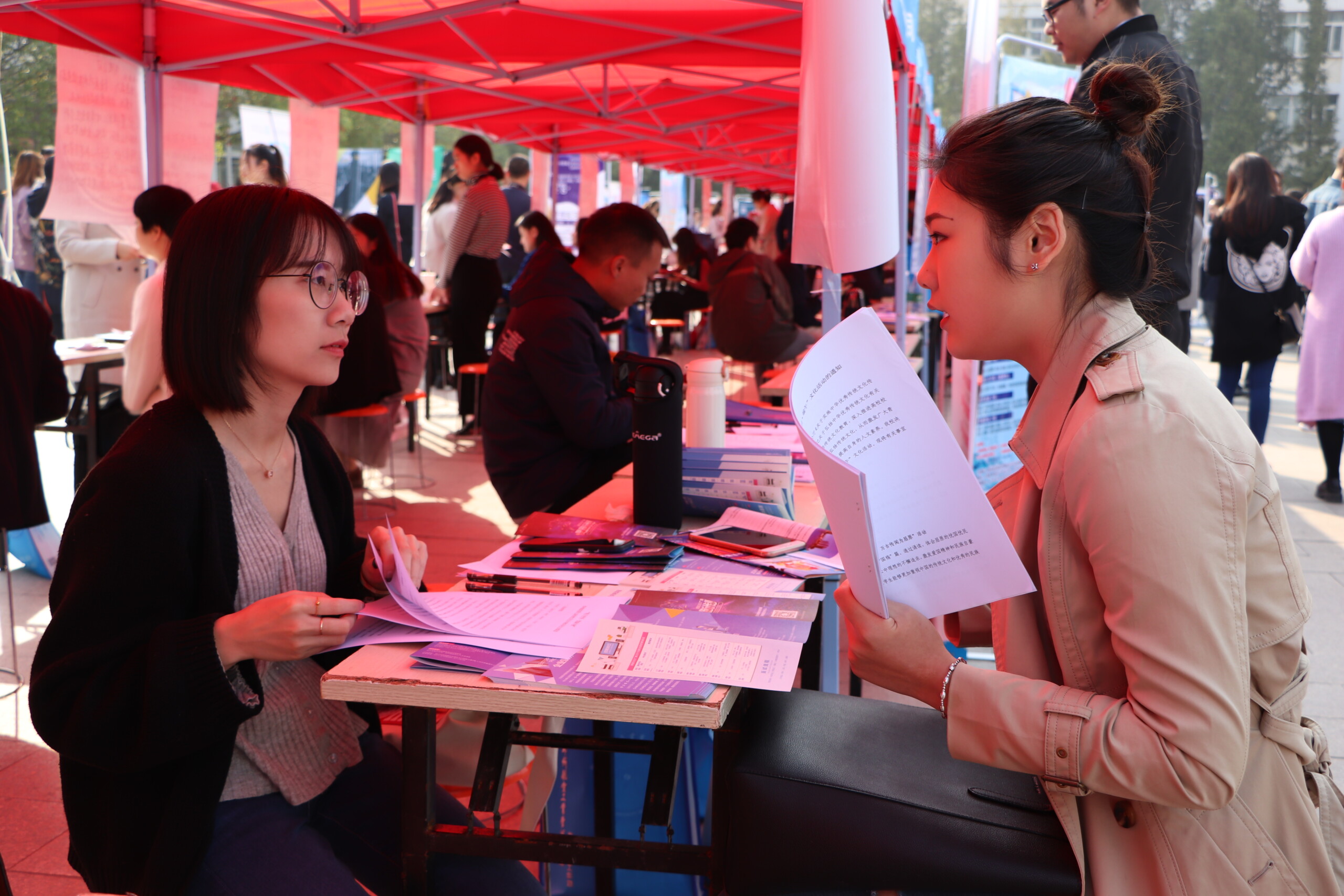
In May, China reported that youth unemployment (among those aged 16 to 24) had reached a record-breaking 20.8%, with the high-paying, high-skilled jobs that university graduates are trained for growing scarcer. Since mid-2021, hundreds of thousands of positions have been eliminated in the tech sector, owing to the COVID-19 pandemic, stringent capital and antitrust regulations, and the government’s broader “tech crackdown.” And, as the rapidly changing policy environment adds to the uncertainty, cutbacks are also coming to other high-skilled sectors like finance.
In June, the Chinese internet was flooded with despairing photos and messages from new graduates whose only employment prospects lay in low-paying sectors, where there is still some job growth. Chinese students and their parents are finding this new economic reality difficult to accept, given the tremendous sacrifices they made for higher education.
The Chinese education system is one of the most competitive in the world, not least because college admission is determined by a single standardized national exam, the gaokao. By the time most graduates from good colleges arrive on the job market, they have committed many years of their youth to intensive study. The pressure to master the core curriculum – math, science, and literature – is so great that even elementary schools have cut back on non-academic classes such as physical education and music.
Meanwhile, these graduates’ families have made sacrifices that are hard to imagine in many other countries. Children as young as ten often do four hours of homework per day, requiring constant encouragement, monitoring, and coercion from parents. All this is done with the expectation of enjoying future security in a rapidly growing economy – except that now economic growth has waned.
Although Chinese girls outperform boys across subjects and age groups, they have long been prevented from entering traditionally male industries…
Young women tend to suffer more than young men in the labor market. Although Chinese girls outperform boys across subjects and age groups, they have long been prevented from entering traditionally male industries such as civil aviation, which previously had explicit anti-female quotas. These hurdles reflect China’s strong tradition of preferring sons. There are 116 boys for every 100 girls among those aged 15-19, compared to 98 boys for every 100 girls in the United States.
Moreover, women’s employment prospects were further reduced after the government started pushing, in the mid-2010s, to increase fertility. With the birth rate falling to an all-time low – setting the stage for massive economic problems down the road – the central government abandoned its one-child policy, and many provinces have increased maternity leave above the national minimum.
But this has made employers more reluctant to hire women, with many voicing concerns about the cost of future time off for bearing and rearing children. The assumption is that a man will work as many hours as you need, no matter how many kids he has, whereas a woman might not.
These cultural norms are colliding with the contraction of high-skill jobs. If there are more jobs than workers, employers have no choice but to hire women and provide the necessary support and benefits. But with 11–40 applicants for every opening, China has become a buyer’s market. The immediate result is that young women will be forced to take even lower-paying jobs than men with similar qualifications; and some may simply exit the labor force altogether.
Young women’s darkening employment outlook is just one of many signs that the Chinese economy is headed in the wrong direction. For decades, China’s growth has followed the pattern of advanced economies, with rising incomes and educational attainment, shrinking family size, and growing female labor-force participation. But now it is heading back toward lower incomes and educational outcomes (as parents conclude that higher education will not result in high-paying jobs), larger families, and lower female labor-force participation.
The slowdown from 10% annual GDP growth was inevitable. But current patterns raise profound concerns for China’s economic outlook, especially considering that the government’s policies for addressing them have not worked. For example, to reduce some of the pressure on schoolchildren and their parents, the government abruptly banned online tutoring in 2021, arguing that this would help level the playing field. But all the policy did was drastically reduce the value and the number of jobs in tech (and in the parts of the financial sector that had invested in it).
To stem the reversal of its economic fortunes, China must address the root of the problem: the lack of high-paying, high-skilled jobs.
Worse, families now must pay even higher prices for in-person tutoring, lest their child fall behind. And with the broader reduction in high-paying jobs, an already hyper-competitive system will become even more cutthroat, adding to the costs parents must bear to secure their children’s financial future. Again, these increased costs will hurt girls more than boys. Under the one-child policy, urban parents with daughters invested all their resources into their only child. But now that Chinese parents can have two or more children, many will allocate their limited resources to sons over daughters.
To be sure, one way to address youth unemployment is to encourage young graduates to return to rural areas and take lower-paying manual jobs. But for a middle-income country where economic development is closely associated with the growth of cities, ruralization would represent regression. It would not increase wages, motivate future generations to pursue a higher education (which is necessary for creating higher-paying, high-skilled jobs), or provide women with more equal opportunities.
To stem the reversal of its economic fortunes, China must address the root of the problem: the lack of high-paying, high-skilled jobs. If the economy is going to grow (or at least avoid a contraction) in the long run, the government must create the conditions for job creation in high-productivity sectors, and for greater investment in higher education.
Copyright: Project Syndicate, 2023.

Nancy Qian, is a Professor of Managerial Economics and Decision Sciences at Northwestern University’s Kellogg School of Management, and the Founding Director of China Econ Lab and Northwestern’s China Lab.




